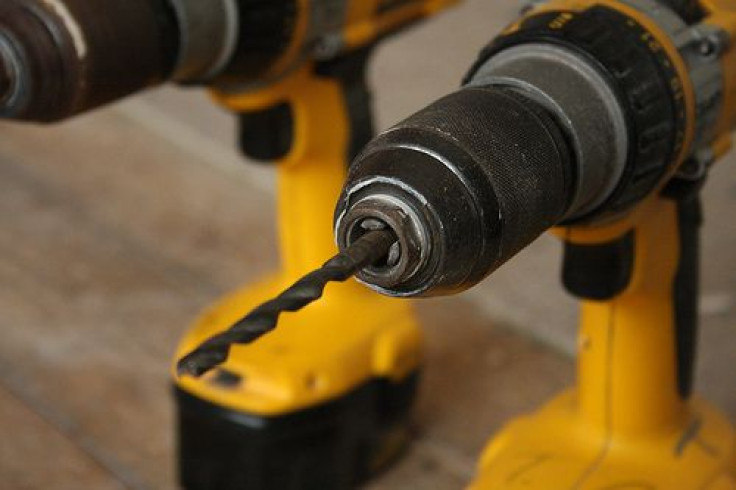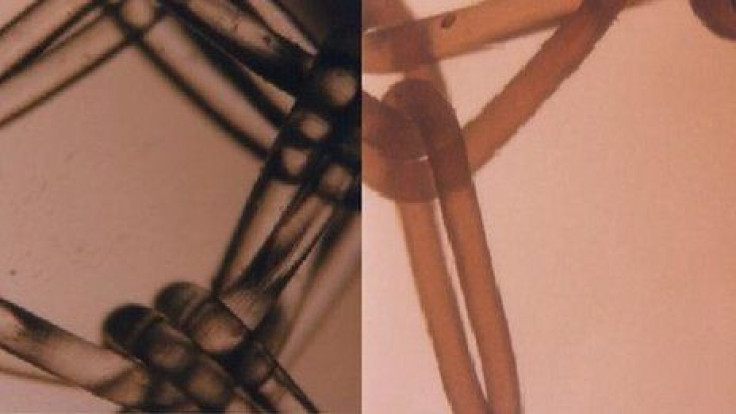5 Everyday Objects That Could Save Your Life

While your three advanced medical degrees look nice framed on the wall above your fireplace, they’re probably going to be of little help if you burn yourself on the stove or suffer multiple bee stings out in the yard and immediate care is vital. Some accidents demand immediate attention, and it’s rarely the case when you’ll have a set of surgical tools lying around the house to self-operate. Here are five everyday objects that could one day save your life:
5. Tea Towels Stop Bleeding
Cutting yourself is one of the most common kitchen injuries, so it helps to have a go-to method for stopping the bleeding as quickly as possible. Small cuts or scrapes may do little harm in the long run, but knives with thicker blades can leave deep gashes in fingers and hands. In such cases, controlling the bleeding with a freshly ironed dish or tea towel provides just about as sterile a wrap as you’ll find in the moment.
At the first sight of blood after cutting yourself, find the nearest, cleanest dish towel and apply direct pressure to the wound for at least 20 minutes. As hard as it may be, you have to avoid the temptation to see if it’s stopped bleeding, as even small decreases in pressure could stop the blood from clotting and the whole process must begin again.
"Even with a dirty tea towel, in a first aid situation it's about priorities," Clive James from St John Ambulance, told the BBC.
How You’ll Survive: Squeezing a wound with a near-sterile dish towel helps the escaping blood to thicken. If the wound is too large to be contained with only one towel, compound several on top of the wound or apply direct pressure to the artery that delivers blood to the area. Kitchen injuries typically won’t result in fatal blood loss directly, but rather, fainting as a result of modest bleeding. Quick action is key.
4. Plastic Wrap Dresses Thermal Burns
There’s a reason virtually every ambulance in the country keeps a roll of plastic wrap in the back: it’s that effective at treating burn injuries instantly. Plastic wrap has a number of things going for it. It’s transparent; it only sticks to itself; and it’s almost completely sterile right off the roll. It’s also dirt cheap, which makes stocking up on it for on-call use all the more efficient.
"I can't recall a single incident of its causing trouble for the patients," former American Burn Association president, Dr. G. Patrick Kealey, told ACEP News. "We started using it as an answer to the problem of how to create a field dressing that met those criteria. I suppose that the use of plastic wrap has spread from here out to the rest of our referral base."
The protocol for using plastic wrap varies across medical service localities. At home, of course, protocol is probably the last thing on your mind. Basic guidelines will suffice.
How You’ll Survive: Wrap a single layer directly around the burn and secure it either to itself or with a strip of gauze roll. Use only for thermal burns (i.e. no chemical or acid burns). Plastic wrap is non-toxic and easily removable once you reach the hospital.
3. Credit Cards Dislodge Bee Stings
Do not use tweezers. Especially if you are allergic, the common tool will only squeeze more venom out of the sac and into your skin, resulting in more pain and swelling. A better method is to drag one edge of a credit card across the skin and gently guide the stinger out from the reverse side.
If you are allergic or your body is highly sensitive to bee venom, call emergency medical services before doing anything else. Only then, in the space of time between calling them and them arriving should you attempt to remove the stinger.
How You’ll Survive: Dragging a credit card across your skin prevents excess venom from entering your bloodstream, unlike tweezers. After removing the stinger, use a mixture of baking soda and water to dab the wound and draw out any residual venom.
2. Power Drills Relieve Brain Pressure
You probably have one collecting dust in the garage somewhere. As it turns out, the faithful power drill (or perhaps a fancier version of one) is a staple in many brain surgeons’ arsenal because of its ability to crack a human skull with uncanny precision.
When patients enter the hospital suffering from a stroke or brain tumor, the swelling in their brain is often so severe they report unbearable headaches. The only relief is to reduce the pressure. When Ukrainian physician Dr. Henry Marsh couldn’t afford the $30,000 medical drill, he took up his own practice of drilling into patients with a Bosch-brand home drill.
“I’m not recommending that we should all use Bosch do-it-yourself drills in England,” Dr. Marsh told Fortean Times. “But it shows how with improvisation you can achieve a lot.”
Marsh has even passed his power drill wisdom onto an apprentice, who has taken the practice and elevated it to new heights, now “able to do things I can’t,” Marsh said.
How You’ll Survive: In the most severe cases of intracranial pressure (ICP), doctors will perform a “decompressive craniectomy,” where part of the skull is removed with a drill to allow the dura matter to expand – without crushing the skull or herniating it.
And speaking of hernias…
1. Mosquito Nets Repair Hernias
In 1994, the remarkable discovery was made that surgical mesh worked with nearly the same effectiveness as simple mosquito nets in repairing hernias in underdeveloped countries. Dr. Ravi Tongaonkar headed the investigation and eventually went on to perfect a mesh that was 4,000 times cheaper than standard surgical mesh and effective in fixing 591 hernias. Since then, scientists have found the interlocking hooks of standard mesh look nearly identical to mosquito nets when observed under a microscope.

"The only difference is the polymer used to make them," says Dr. David Sanders, the gastrointestinal surgeon who investigated the hooks’ similarities, "but it makes no difference clinically."
Hernia operations are the most common operation worldwide, the BBC reports, and the mosquito net alternative is slated to save the lives of 50,000 Africans in the coming year. An estimated one in four men globally will be affected in their lifetime.
Hernias result from excess muscular strain put on the bowel, causing it to protrude through a tear in the abdominal wall. Hernias occur most frequently in the groin. And unfortunately for men, nine out of 10 hernia sufferers are male. Untreated, hernias can balloon to the size of footballs – known as “wheelbarrow hernias. Easy on the heavy lifting, fellas.
How You’ll Survive: Mosquito nets are virtually indistinguishable from the polypropylene mesh used in clinical settings, where resources are more abundant. In the Western world, life-threatening hernias are rare; however, they threaten sizable populations of the world where access to adequate medical care is limited. First malaria, now hernias? Mosquito nets are awesome.



























